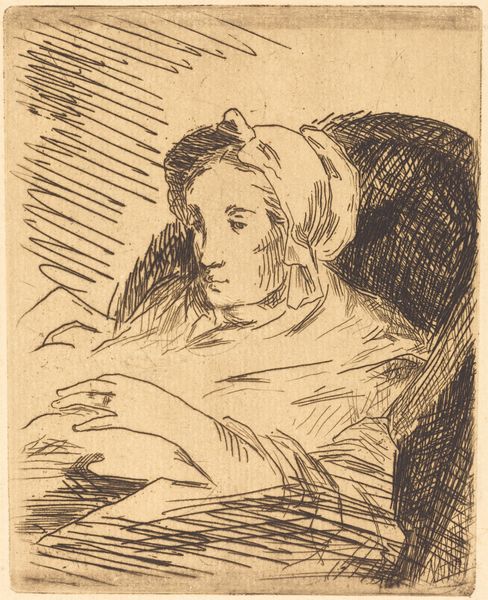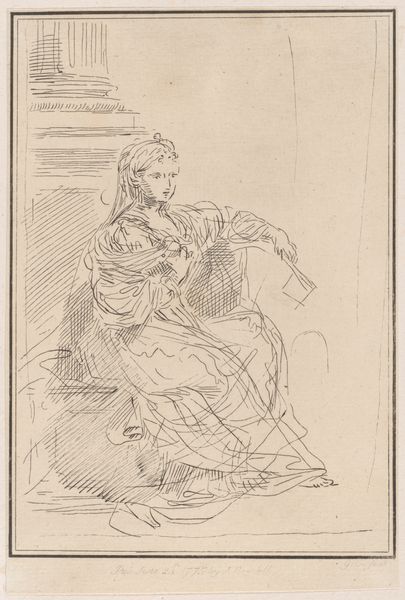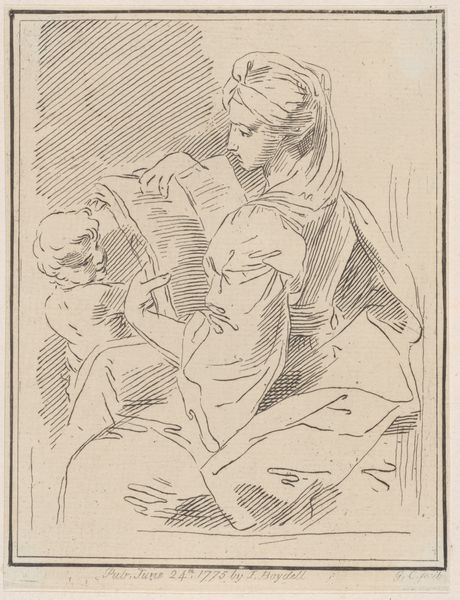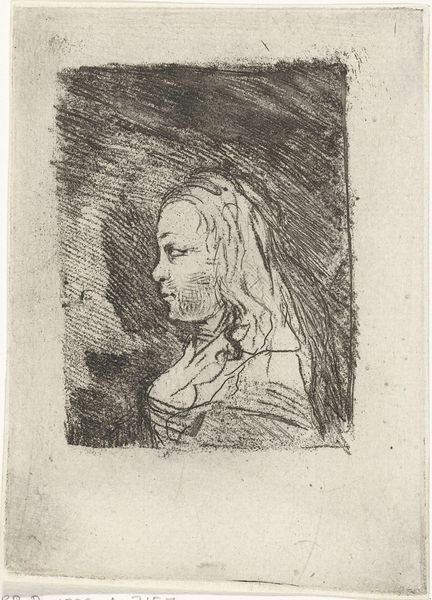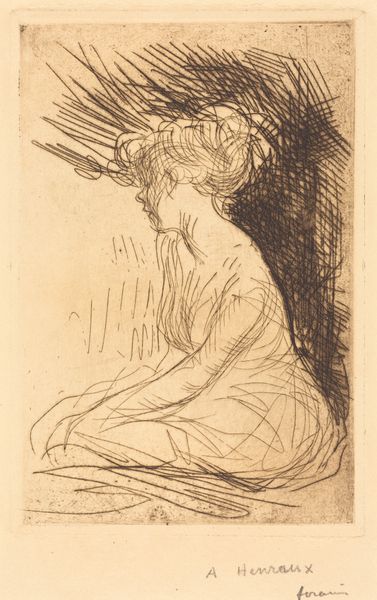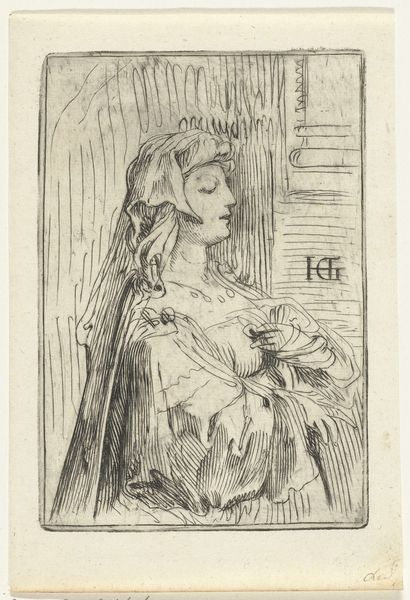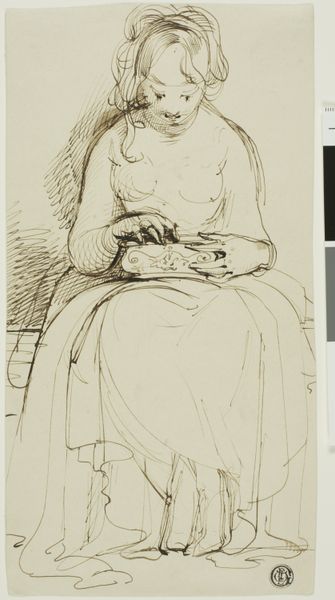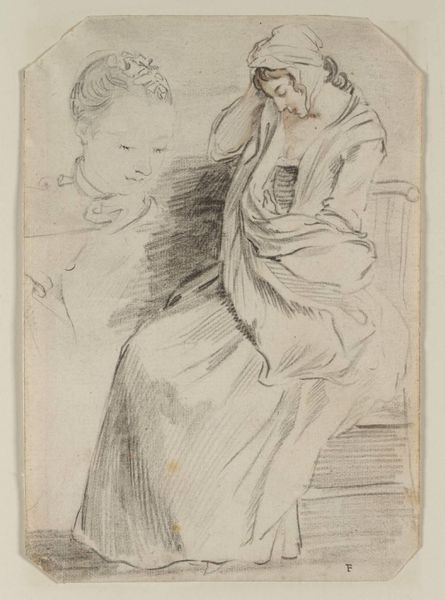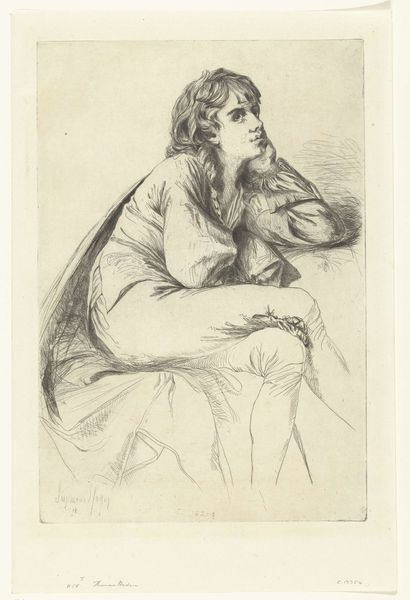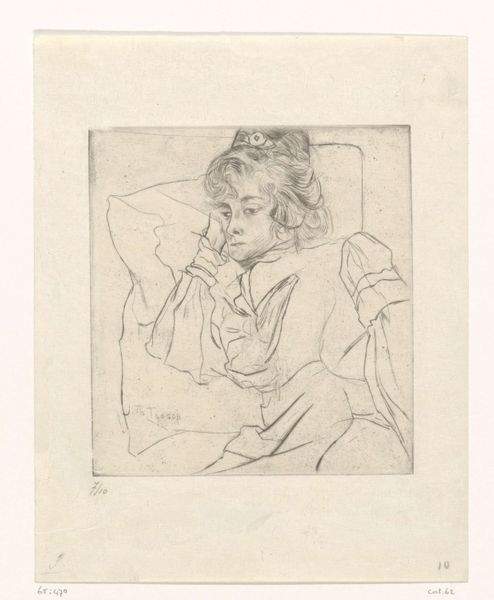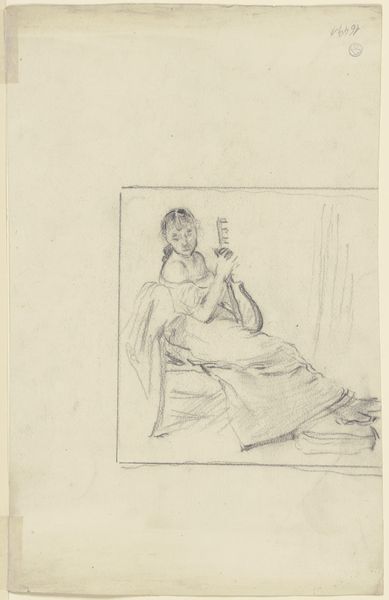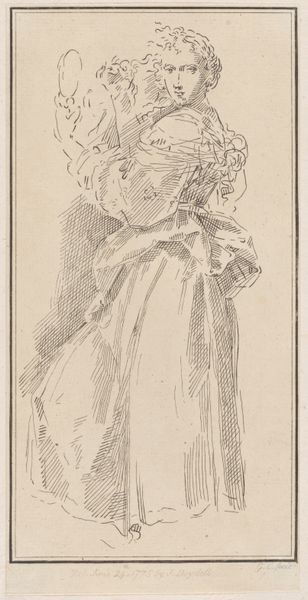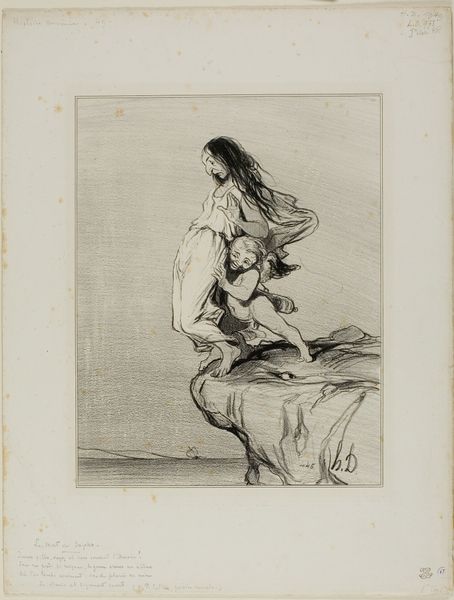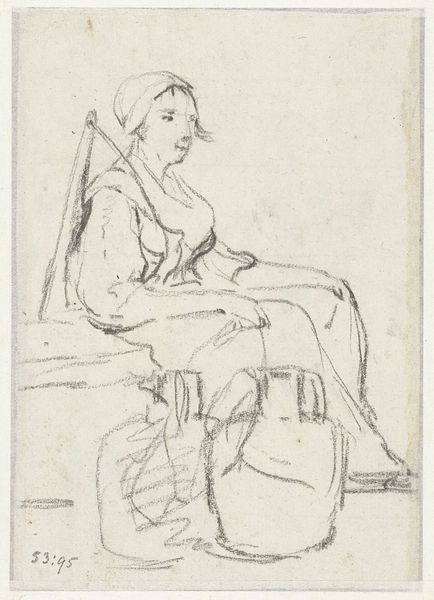
Dimensions: Sheet (Trimmed): 4 5/8 × 3 1/4 in. (11.7 × 8.2 cm)
Copyright: Public Domain
Editor: We're looking at "Woman combing her hair," an engraving by Giuseppe Canale, created around 1775. It's currently held at the Metropolitan Museum of Art. There's something almost melancholic about her pose and the sparse lines of the print. What historical factors do you think contributed to the creation and reception of such an intimate, yet publicly available image? Curator: The late 18th century saw a fascinating interplay between the private sphere and its representation for public consumption. Genre painting became incredibly popular, focusing on everyday life, especially scenes involving women. This engraving would have been widely disseminated, contributing to a growing visual culture where ideals of feminine beauty and domesticity were actively being constructed and circulated. How do you think the engraving medium itself impacted its reception? Editor: I imagine the affordability and reproducibility of engravings allowed a broader audience to engage with this idealized image, further solidifying societal expectations of women. Does the act of combing hair have some symbolic weight in the cultural context of the time? Curator: Precisely. Combing hair can be seen as a moment of self-care, but also vanity, reflecting concerns about female virtue and appearance that were heavily policed by society. Also, note who is “publishing” the print, identified in the inscription. Who were they and what kind of political sway did they wield in image creation and reception? Editor: It is published by J. Boydell, who I presume was the print seller or publisher. So he was directly contributing to shaping what was seen and distributed within society, impacting norms and tastes, right? This piece is far more charged with cultural meaning than I initially thought. Curator: Absolutely. By understanding the historical context, we see how seemingly simple images like this were deeply involved in shaping social and cultural landscapes. We are seeing public art play a vital role in societal understanding and the cultural context behind it. Editor: That's fascinating! I now realize how crucial it is to examine the social and institutional forces at play when interpreting art, like the economics behind its dissemination. Curator: Agreed. Considering the intersection of artistic creation, publishing, and the public provides a much richer understanding of art’s function in history.
Comments
No comments
Be the first to comment and join the conversation on the ultimate creative platform.
